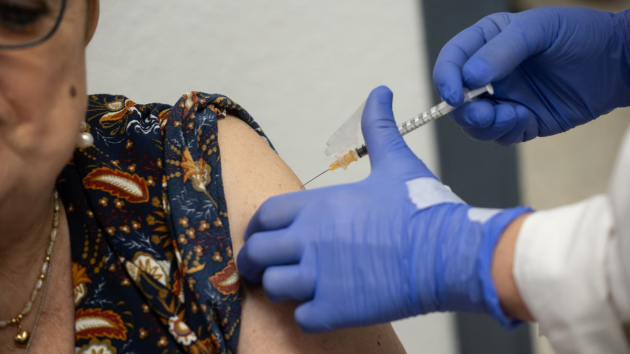ER doctor shares how to prepare for flu season with a ‘flu box’
Written by ABC Audio All Rights Reserved on September 25, 2024

(NEW YORK) — With autumn in full swing, flu season is ramping up as well.
According to the Centers for Disease Control and Prevention, flu season in the U.S. typically picks up in the fall and winter months and children, especially, are the most likely to get sick from influenza, a type of respiratory virus.
Here’s how to prepare for the season ahead:
What causes influenza (flu)?
The flu is caused by various influenza viruses that impact the respiratory system. For the 2024-2025 flu season, the CDC expects the dominant influenza viruses in the U.S. to be an A(H1N1) virus, an A(H3N2) virus, and a B/Victoria virus.
What are common flu symptoms?
Symptoms of the flu can vary but per the CDC, they may include fever or chills, a cough, sore throat, runny or stuffy nose, muscle or body aches, headaches, fatigue, vomiting or diarrhea. The latter two symptoms are more common among children with the flu.
What is the flu incubation period and when are you most contagious?
Individuals with the flu can spread the virus to others, and according to the CDC, the incubation period can last between one and four days. The first three days of an infection tend to be the most contagious period.
The CDC recommends a flu vaccine for nearly everyone six months and older in the U.S. every flu season, except for anyone younger than six months or anyone with a severe, life-threatening allergy to any ingredient in a vaccine or the flu vaccine specifically.
What months are considered flu season?
The flu is most active between the fall and winter months. During the 2023 to 2024 flu season, CDC reports showed that national flu activity started to increase in October 2023 and didn’t start to decline until mid-April 2024.
How can you prepare for flu season?
Dr. Meghan Martin, a pediatric emergency medicine physician and a mom, shared in a TikTok post what she keeps on hand at home to stay prepared for flu season.
Her top items include:
- Disposable vomit bags
- Acetaminophen/Ibuprofen in multiple forms, including chewable tablets, liquid form or suppositories
- Digital Thermometer
- Zyrtec or a similar second-generation histamine for allergic reactions or hives
- A portable pulse oximeter to measure heart rate and oxygenation
- Packs of electrolyte powder
- Cough suppresants and oral anesthetics including those in lollipop forms
- Saline nasal mist
- A squeeze bottle kit for over-the-counter saline solutions
- A saline inhaler
- Nasal saline drops with a suction bulb
Copyright © 2024, ABC Audio. All rights reserved.

 KVSP
KVSP 





